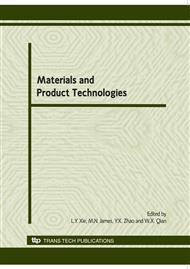p.221
p.226
p.231
p.236
p.241
p.246
p.251
p.256
p.261
Progressive Damage Approach to Simulating Low Velocity Impact Response of Plain Weave C/SiC Composites
Abstract:
Based on progressive damage theory, a 3D laminated model with an orthotropic property in plane was established to simulate the response of plain weave carbon fiber reinforced silicon carbide(C/SiC) ceramic matrix composites(CMC) under low velocity impact(LVI). Intra-layer damage and inter-layer damage were taken into account, respectively. Three scalar damage variables, associated with the degradation of warp modulus, weft modulus and shear modulus, respectively, were proposed to characterize intra-layer damage evolutions. The intra-layer constitutive model was implemented into MSC.Dytran, via its user subroutine EXFAIL1. The potential delamination region was considered as a discrete cohesive zone. Three vector spring elements were placed into every two adjacent nodes to simulate the inter-layer joints. A scalar damage variables, associated with the degradation of the three vector spring elements, were brought forward to characterize the inter-layer damage evolutions. The inter-layer constitutive model was implemented into MSC.Dytran, via its user subroutine EXELAS. Damage area, indentation depth of C/SiC composite plates and time history of impact force were obtained to compare with experimental results. The numerical results show overall good agreement with experimental results.
Info:
Periodical:
Pages:
241-245
Citation:
Online since:
June 2010
Authors:
Price:
Сopyright:
© 2010 Trans Tech Publications Ltd. All Rights Reserved
Share:
Citation:


